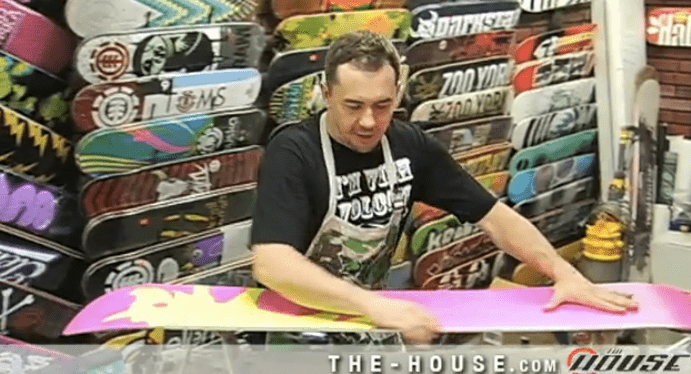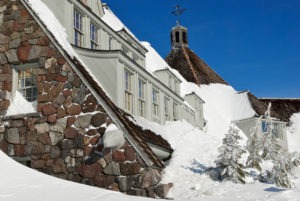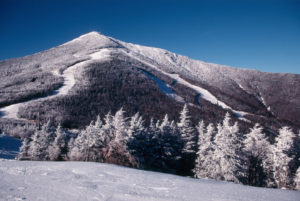Waxing and tuning a snowboard is essential to the performance you will get out of it. If you don’t wax your snowboard and take care of your snowboarding gear before going to ride you are just cutting yourself short. Tuning includes waxing, sharpening the edges and a few other things. To tune the board first take off the bindings. This will make the process much easier because the board needs to be flipped upside down. Tuning vices will also make the process much easier, but they are not necessary.
The first step in tuning a snowboard is to sharpen the edges. The easiest way to sharpen edges is to use a file guide. A file guide will keep the file at the same angle for every swipe along the entire length of the board. Most file guides will have an angle indicator on them that you can set the degree of the edge for different riding styles. Complete as many swipes as needed but only swipe the file in one direction, not up and down.
Freestyle riders will want to be detuning their edges rather than making them sharper. A regular file will be used for this. Sharp edges will be much more likely to catch on rails and boxes and can cause injury to the rider. Detuning is rounding the edges and making them smooth. Whether sharpening or detuning the edges it should only take a couple passes to get the desired edges.
How to Wax a Snowboard
Once the edges are sharp then the base should be waxed.
What supplies you’ll need:
- A work area, preferably a garage or workshop space. Sometimes waxing can get a little messy.
- A waxing specific iron. Don’t use your home iron. Once you use an iron for waxing you can’t use it again to iron clothes. Wax specific irons come with a flat base (as opposed to steam vents) and temperature settings that are ideal for melting snowboard and ski wax.
- Snowboard or Ski Wax
- A Scraper
- A Base Brush/Buffer
- Base Cleaner
- A phillips-head screwdriver (For loosening or taking off your bindings prior to waxing).
Shop The House for Snowboard Waxing and Tuning Supplies.

Wax Off
The first step to applying new wax to a snowboard is to remove the old wax. Wax remover is usually a citrus solvent like base cleaner. Simply spray it over the base and wipe it off. If you don’t have any, run a hot iron over the base, apply a thin layer of wax, and then scrape instantly.When riding on man-made snow or in spring conditions a lot of buildup can gather on the base of a snowboard. It is important to get all the dirt off before applying new wax. Removing old wax is also very important if you are using temperature specific waxes. If changing from a cold weather wax to a warm weather you don’t want any of the old stuff to be left over on the base.
Wax On
The easiest and quickest way to apply new wax is to use a rub on. These waxes will work best on extruded bases that are not very porous. Rub on waxes will usually use a sponge to apply them, or if they are a bar of wax just rub the bar evenly over the entire base. These bars of rub on wax will normally have a cork to even it out once applied. Rub on waxes work okay, but the best option for waxing is by far a hot wax.
Hot waxing your snowboard will bring out the best performance on your next trip and allow the base to glide much faster over the snow. A hot wax will penetrate further into the base and last much longer. Boards with sintered bases should only use hot wax because this base is much more porous and will absorb much of the wax. If a sintered base is not hot waxed regularly its performance will significantly depreciate. Applying hot wax will require an iron. Regular clothing irons might work but they will without a doubt be ruined. Clothing irons have steam holes that will get plugged with wax among other flaws for waxing purposes. Snowboard wax specific irons will work best because they will have certain heat settings for different kinds of waxes, they will be solid across the bottom with no holes for wax to get into and they will have a certain shape that will glide over a snowboard base.
Many snowboarders will prefer to use an all temperature wax in case of dramatic spikes in the weather from day to day. Temperature specific waxes will be used mostly by racers that will tune their board distinctively for the conditions the day of the race. Also a fluorinated wax will be best because it will penetrate in to the base better and the result is it will last longer and it will be faster.
Once the iron is heated touch the wax directly to the iron so that the wax will begin to melt and drip onto the base of the board. Drip the wax over the entire base focusing most of the wax on the edges of the board. The edges are going to be much drier because they have more contact with the snow and get used more heavily. Just a couple lines up and down the edges and a quick zig zag down the center should be enough. It does not take much wax to cover the base, but do make sure there is enough to cover the whole area.
When applying wax also take into consideration what type of base the board has. Because a sintered base is more porous than an extruded base it is going to absorb a larger amount of wax. Once the wax is dripped on to the base simply rub the iron over the base. Your goal here is to re-melt the drops of wax and even them out over the base. The nose and tail are not as important in the waxing process because they have much less contact with the snow. Really focus on the outer edges and underneath the bindings. The more even the wax is over the board the faster it will be.
Once you have smoothed the wax over the base look it over to make sure that there are no areas that don’t have wax on it or are kind of thin. The edges may require more wax because they will absorb more. If they still look dry don’t be afraid to add more wax. It is impossible to put too much wax on because all the excess is going to be scraped off. Too much excess wax will simply create more work when scraping.
Scrape and Smooth
Once the wax has been applied and smoothed out let it cool down. This may take 15 or 20 minutes. The goal is to let the board return to room temperature. This will let the pores completely absorb the wax and will give you better results. You don’t want to rush scraping hot wax or the process won’t work as well.
To scrape the board, first start with the edges by running the scraper over the base at around a 45 degree angle with a lot of pressure applied. Run the scraper in long even strokes and not in short back and forth motions. This will make the wax more even and faster on the snow. The main goal of a hot wax is to get wax into the pores. Any excess left on the base will slow the board down. So put as much pressure on the scraper as needed to get all the excess off.
Run your hand over the base to feel if there are any areas that have wax left on it. Racers have a saying that is “thin to win” the thinner the excess wax on your base is the faster your board will be. All the wax your base needs is in the pores.
Once all the extra wax has been removed you will want to use a Scotch-Brite pad or Fiber Tech that will help to remove any leftover wax. It will force more wax into the pores and will help to leave it really smooth and even. A pad for this purpose will often be included in a lot of tuning kits. A good way to save money on getting equipment to tune a snowboard is to buy it all together in a kit. Some will incorporate everything including the iron and they will have a case to keep it all together. Being able to tune and wax your own snowboard will also save you a lot of money. Having a shop do it for you will often cost around $20- $30.
Buff It Out
This should complete the wax, but to get an extra nice finish on the wax a cloth can be used to buff over it. You can also add texture to the wax which will create channels that will wick water away from the base when riding. Texture will break up the surface tension and decrease suction between the base and snow and make the board more slippery. To do this use a horsehair or brass brush and run it diagonally across the board. Use this to also make sure there isn’t any wax build up in your bindings or stomp pad.
Shop for wax and tuning tools and snowboards.












is that guy chewing gum?
Top tips!
I ride a K2 Carveair, 154 cm, Ride insano boots (9/10 stiffness) and Now 2017 Drive bindings (9/10 stiffness). All I really do is ride fast and carve hard, eurocarving if the conditions are right. That being said, would you recommend I detune my edges?
Thanks so much for your advice. 🙂
Nope. Keep your edges sharp. You could bevel your base edge 1° to make it less catchy.
[…] The House, How to Wax and Tune a Snowboard […]
[…] front of your attention. With winter in mind, some of you may have already taken the time to start tuning your board, planning your white dreams and have some trips lined up. Snowboard and Ski trips with your friends […]
[…] Kits: If you’re going to wax your snowboard, you might want the proper tools (a tuning kit) to do […]